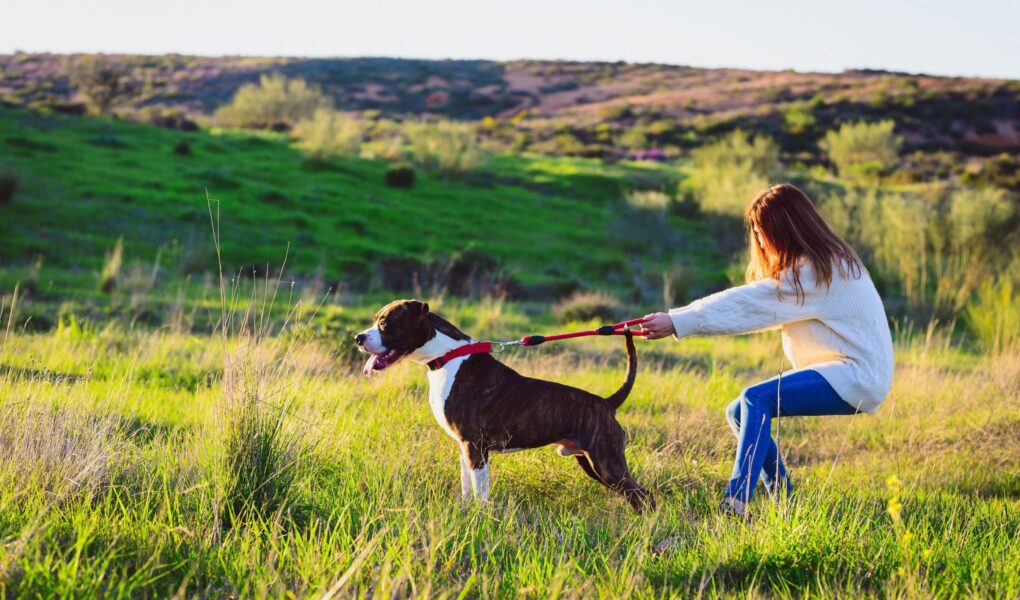Title: The Tug of War: Understanding Canine Lead Pulling
Introduction:
As you step outside, leashing your dog and preparing for what should be a peaceful stroll, the experience can quickly turn into an unanticipated test of patience. With a gentle tug to start, your furry companion seems to transform into a determined sleigh dog, racing forward with unwavering enthusiasm, leaving you grappling with your own footing. The phenomenon of dogs pulling on their leads is a common yet perplexing challenge faced by many pet owners. But what lies behind this primal instinct to forge ahead? In this article, we will explore the reasons behind this behavior, the implications it has for both dogs and their humans, and practical strategies to transform those vigorous pulls into a harmonious walk. Together, we will delve into the world of canine communication and training, uncovering insights that could turn your leash-dragging escapade into an enjoyable adventure.
Table of Contents
- Understanding the Causes Behind Dog Pulling on Lead
- Effective Training Techniques for Loose Leash Walking
- Choosing the Right Equipment for Better Control
- Creating a Consistent Routine for Successful Walks
- Q&A
- Final Thoughts
Understanding the Causes Behind Dog Pulling on Lead
Dog pulling on the lead is a common issue faced by many pet owners, often stemming from various underlying causes. Excitement can be one of the primary reasons; dogs are naturally curious and thrilled by the sights and sounds around them. When out for a walk, the world is an endless source of stimulation. Additionally, instinctual behaviors play a crucial role; breeds initially developed for herding or hunting may have a natural inclination to pull, leading to a tug-of-war between the owner and the pet. It’s essential to consider the dog’s age and energy levels, as younger dogs or those with excess energy may also tend to pull out of sheer exuberance.
Moreover, inadequate training and inconsistent commands can exacerbate the pulling issue. A lack of clear expectations can leave your dog confused about how to behave on a lead. In some cases, fear or anxiety can be a motivating factor; a timid dog may pull away from perceived threats or avoid uncomfortable situations. Socialization also significantly impacts this behavior; dogs that haven’t had the chance to interact with other animals or people may react more strongly to new encounters, pulling on their leads in response. Understanding these elements can help owners devise effective training strategies to mitigate pulling and enhance the overall walking experience.
Effective Training Techniques for Loose Leash Walking
Teaching your dog to walk on a loose leash can transform your daily walks into enjoyable adventures. One of the key techniques is to reward-based training. When your dog walks beside you without pulling, rewarding them with treats, praise, or play can reinforce this positive behavior. It’s essential to be consistent; whenever your dog maintains the desired position, shower them with affection. To facilitate this learning process, consider using a clicker—a sound that marks the behavior you want to encourage. This method creates a clear association between the action and the reward, making it easier for your dog to understand what is expected.
Another effective technique is the stop-and-go strategy. Whenever your dog begins to pull, promptly stop walking. Stand still until the leash loosens, and once your dog returns to your side, resume your walk. This approach teaches your dog that pulling will result in a halt in their progress, while walking calmly will lead to more movement and exploration. Additionally, you can incorporate change of direction training. If your dog starts to tug, turn in the opposite direction and continue walking. This strategy not only strengthens their focus on you but also encourages them to pay attention to your movements. Remember to keep training sessions short and fun to maintain your dog’s interest and enthusiasm!
Choosing the Right Equipment for Better Control
When it comes to managing a dog that tends to pull on the lead, selecting the appropriate equipment can make a significant difference in your walking experience. Consider the following options to help enhance your control:
- Head Halters: These fit over the dog’s nose and allow for better head control, reducing pulling effectively.
- No-Pull Harnesses: Designed with front clips, they redirect pulling and encourage your dog to walk beside you.
- Traditional Collars: While they can be used, they may not provide enough control for strong pullers.
- Leash Types: Opt for a sturdy leash, ideally 4 to 6 feet in length, which gives you the flexibility to control your dog without being too restrictive.
Understanding the strengths and weaknesses of your chosen equipment is crucial. Here’s a simple comparison table to highlight the features of some common options:
| Equipment | Control Level | Comfort for Dog |
|---|---|---|
| Head Halter | High | Moderate |
| No-Pull Harness | Moderate | High |
| Traditional Collar | Low | Moderate |
Creating a Consistent Routine for Successful Walks
Establishing a reliable walking routine is essential for both you and your dog. To create a consistent schedule, consider the following:
- Time of Day: Choose specific times for walks, aiming for consistency each day to build anticipation for your dog.
- Frequency: Commit to regular walks; aim for at least once or twice a day, adjusting based on your dog’s energy levels and breed needs.
- Duration: Keep walks engaging yet manageable, varying the length based on weather and your dog’s stamina; generally, 30 minutes is a good starting point.
Incorporating training exercises during these walks can help reinforce good behavior and reduce pulling. Use techniques such as:
- Frequent Stops: Halt walking when your dog pulls ahead, rewarding them when they return to your side.
- Change of Direction: Regularly change your walking path to keep your dog engaged and focused on you.
- Positive Reinforcement: Bring treats or toys to reward your dog for maintaining a loose lead.
By committing to a routine and incorporating training, you can significantly improve your walking experience, leading to enjoyable outings that strengthen your bond with your dog.
Q&A
Q&A: Understanding and Managing Dog Pulling on Lead
Q1: Why does my dog pull on the lead during walks?
A1: Pulling on the lead is a common behavior among dogs and can stem from several motivations. Your dog may be excited about exploring their environment, eager to interact with other animals, or simply trying to maintain their position ahead of you. Dogs are naturally curious creatures, and pulling can often signal their desire to investigate the world around them.
Q2: Is pulling on the lead a behavior that can be corrected?
A2: Absolutely! While it may feel like an insurmountable challenge, lead pulling can be corrected with patience and consistent training. With the right techniques, you can teach your dog to walk politely beside you, enhancing both your walks and your bond.
Q3: What training methods work best to prevent pulling?
A3: Several effective methods can be employed to curb lead pulling. Techniques include:
- Positive Reinforcement: Reward your dog with treats or praise when they walk calmly beside you.
- Stop-and-Go Technique: If your dog pulls, halt your movement. Only resume walking when the leash is slack.
- Frequent Direction Changes: Change your walking direction unexpectedly to encourage your dog to focus on you rather than the environment.
By incorporating these methods into your regular walks, you can help reinforce good leash behavior.
Q4: Are certain types of leashes or collars better for managing pulling?
A4: Yes, while no tool is a magic solution, some leashes and collars are designed specifically to discourage pulling. Front-clip harnesses, for instance, can help redirect your dog’s attention back to you. Head halters can also be effective; they gently guide your dog’s head and, consequently, their body. However, it’s essential to choose equipment with your dog’s comfort in mind and consult with a professional if you’re unsure.
Q5: How can I make walks more enjoyable for both my dog and myself?
A5: Making walks enjoyable can significantly aid in reducing pulling. Incorporate playtime and sniffing breaks to give your dog opportunities to explore and engage. Vary your walking routes to keep things fresh, and consider socializing your dog with other dogs in controlled environments. Engaging activities will not only satisfy your dog’s curiosity but also provide them with mental stimulation.
Q6: When should I seek professional help for my dog’s pulling behavior?
A6: If your efforts aren’t yielding positive results or if your dog’s pulling is associated with anxiety or aggression, it may be time to consult a professional dog trainer or behaviorist. They can offer tailored advice and strategies to address specific issues. Additionally, if your dog is large or particularly strong, professional guidance is recommended for safety reasons.
Q7: What’s the key takeaway for dog owners struggling with pulling?
A7: The most important thing to remember is that consistency and patience are paramount. Dog pulling on the lead is not just a behavioral problem; it’s a communication gap between you and your furry friend. By working together and incorporating training techniques, you can transform your walks into enjoyable experiences filled with connection and companionship.
Final Thoughts
As we conclude our exploration of the challenges and solutions surrounding dog pulling on a lead, it’s essential to remember that every leash tug is an opportunity for connection, communication, and growth. Whether you’re navigating bustling city streets or tranquil park paths, fostering a harmonious walk with your canine companion requires patience, consistency, and understanding. By employing the techniques discussed and adapting them to your unique situation, you not only enhance your dog’s walking experience but also strengthen the bond you share. Each step taken together is a step toward a more enjoyable and stress-free outing. So, tie on that lead, embrace the journey, and head out into the world—your adventures await!



